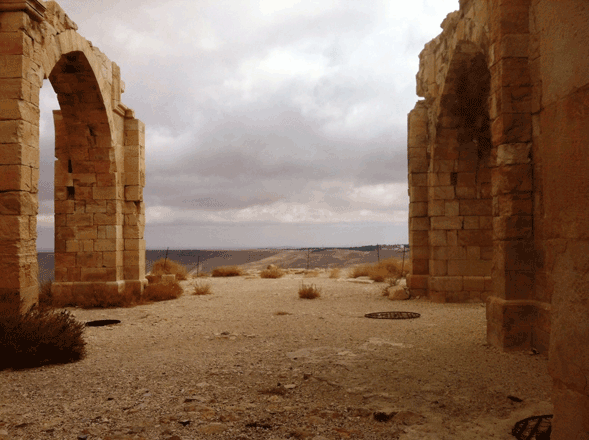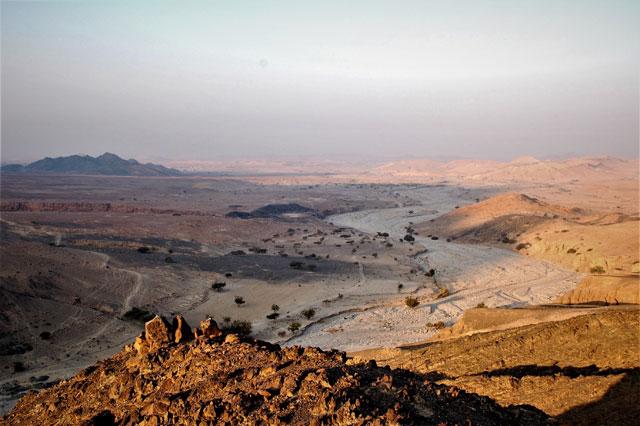You are here
Scholar examines zooarchaeological past of Jordan’s Khirbat ash-Sheikh’Isa
By Saeb Rawashdeh - Feb 11,2023 - Last updated at Feb 11,2023

Interior of the Shobak Castle, one of the Crusader’s bastions in Transjordan (Photo courtesy of Mediaeval Petra-Shobak Project)
AMMAN — Specialisation in livestock management was a significant feature of Transjordan during the Mamluk period (1250-1517), noted a British researcher from University College of London.
According to Professor Louise Martin, zooarchaeological remains and analysis taken at Khirbat ash-Sheikh’Isa near Karak focused on two Islamic phases of the site’s history and occupation. One covers the 9th and 10th centuries and the other includes the Ayyubid-Mamluk periods from the 12th to 14th centuries.
Khirbat ash-Sheikh’Isa was a well-known agricultural centre during the Roman and Early Byzantine periods, and in Abbasid-Fatimid times, chroniclers described it as a “busy market town famous for its indigo and date production”, Martin said, adding that in the Ayyubid-Mamluk period, it became a flourishing commercial centre with an economy based on sugar production.
During its Frankish phase, the site included a Crusader military camp, and it was an outpost of the Frankish defensive network, Martin elaborated, adding that food was supplied by the agricultural producers from rural communities in the area.
“Karak and Shobak were both administrative centres with castles and palaces,” Martin said, adding that increased specialisation in livestock management characterised the Ayyubid-Mamluk period.
The main livestock were sheep and goats, Martin continued, as drier conditions caused the shift from sheep to goat herding.
Goats were more suitable for domestication in arid areas like Transjordan during the Mamluk period than other herd animals, such as sheep, she said.
“People were engaged in intensive agricultural production and innovation,” Martin said, noting that standard zooarchaeological recording methods target questions of animal production.
“Most of material studied in London labs come from the Abbasid period, and the cattle remains didn’t decrease during the later Ayyubid-Mamluk period,” Martin said. According to the professor, there were little or no remains of wild and game animals.
“The other thing to note is that the wild boar and pig are difficult to distinguish, as wild boars ravish the Jordan Valley but they are small in size. The sharp decline in their number during the Ayyubid-Mamluk period indicates that these were domesticated animals during the Frankish occupation of the site,” Martin noted.
Most animals found at the site were cultivated by its inhabitants and peasants in the area, she said, adding that dog and cat skeletal remains testify that these animals were pets at the site.
“We also have remains of camels, donkey and horses as work and transportation animals,” Martin said.
In the Ayyubid-Mamluk period, the research team also detected evidence of wool production, indicated by remains of animals (sheep) older than five years of age.
“Cattle body parts are present at the site, as well as water buffalo,” said Martin, adding that remains of prestige animals were also found at Khirbat ash-Sheikh’Isa.
During the Mamluk period, the number of camels used as transport animals increased, as they were used to carry loads during the time of a very developed sugar industry in the Jordan Valley and the Dead Sea.
“Camels did long-distance costal trade,” Martin said.
“Khirbat ash-Sheikh’Isa reflects a case study to a shift towards more specialised production and it has its own signature with cattle,” Martin concluded.
Related Articles
AMMAN — In the past it was thought that Ayyubid-Mamluk pottery was completely different from preceding Early Islamic pottery because of chan
AMMAN — “We do not possess enough primary sources about the contribution of the copper mining sector to the economy of the Ayyubid-Mamluk dy
AMMAN — To reconstruct Jordan’s past, animal remains play a very significant role, according to an Italian zoo-archaeologist.“Animals, and i



















